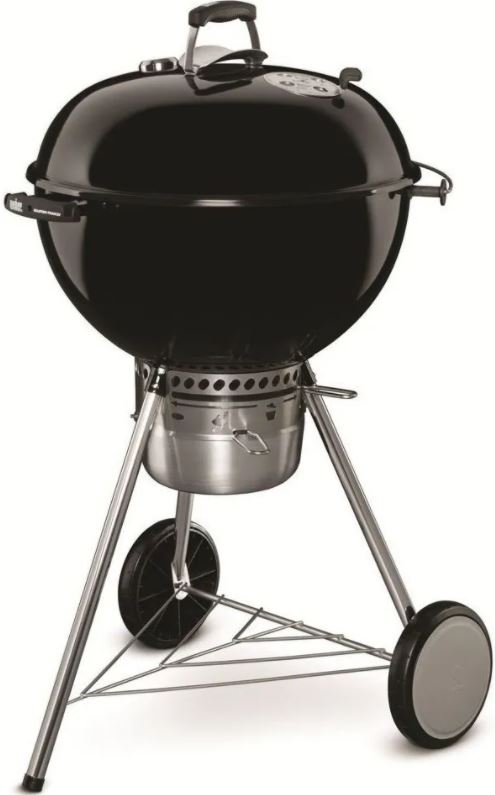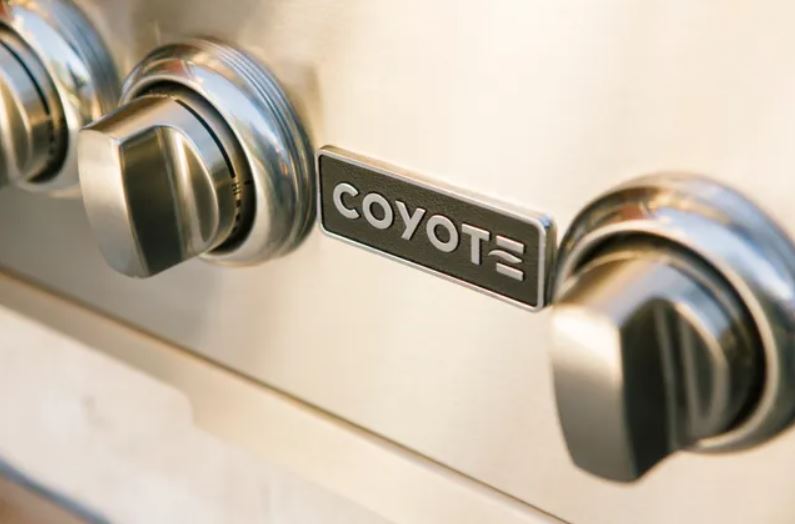- Pros of charcoal grills
- Cons of charcoal grills
- Pros of gas grills
- Cons of gas grills
- Gas vs Charcoal: Where They Differ
- Top charcoal grill pick
- Top gas grill pick
- Best of both worlds grill pick
- Frequently asked questions
- Conclusion
Everyone has their preferred grill type—some enjoy the smokey flavor and deep sear marks of a charcoal grill, while others gravitate toward the precise temperature control and rapid cooking time of a gas grill. Comparing charcoal vs gas is an age-old debate that professional chefs, amateur cooks, and resident grill masters have debated for years. We are all entitled to our own opinion, but this battle of the flame got us thinking about the unique and distinctive features of each grill type and how they differ.
We know that charcoal briquettes give off that traditional backyard barbecue taste, whereas a gas grill allows you to pick up on the natural flavor of your ingredients so you can taste the meat and not the heat. Barbecue conversation typically revolves around whether you want cheese on your burger, but the real debate is deciding which fuel type is the best.
Sometimes, it’s as simple as letting your taste buds answer for you, but every grilling enthusiast should know the difference between both grill types. Thankfully, the experts at Albert Lee came up with a sizzling pros and cons list for charcoal and gas grills so you can make a confident culinary decision.
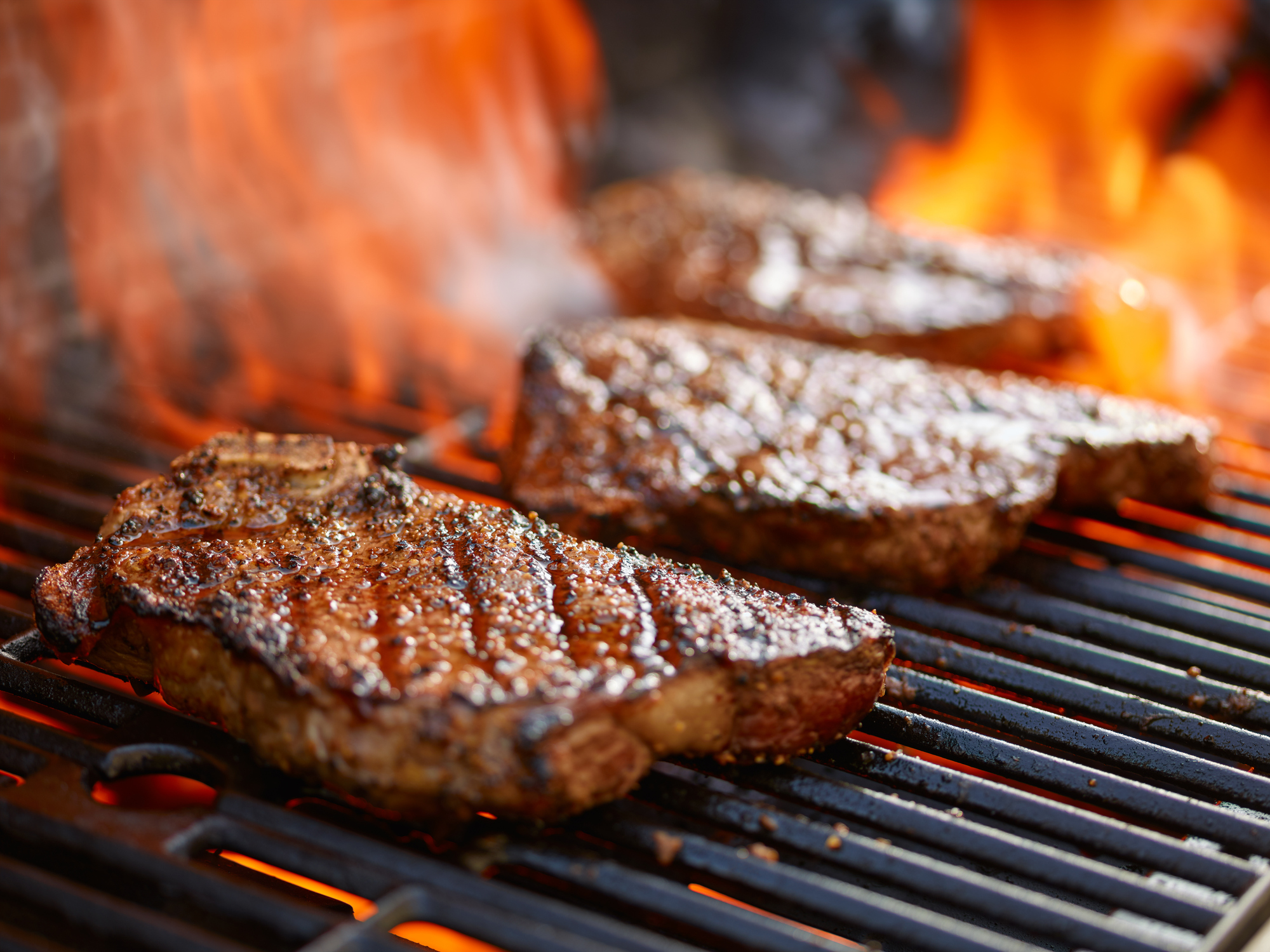
Pros of Charcoal Grills
- Higher temperatures: Charcoal grills typically reach higher temperatures than gas grills and allow you to achieve those distinctive sear marks on your meat.
- Smokey flavor: The high heat produces that succulent, smokey flavor, and any drippings from meat or veggies that fall onto the coals turn into ultra-flavorful steam that is transferred back into your food.
- A more affordable option: Charcoal grills are more affordable compared to most gas grills. Charcoal grills start around $40, whereas most freestanding gas grills start around $200 to $300.
Cons of Charcoal Grills
- Longer heat-up time: It takes about 15–20 minutes for a charcoal grill to reach the proper cooking temperature, on top of the time it takes to light the briquettes. Gas grills light up almost instantly and reach a proper cooking temperature in five to 10 minutes.
- Fuel costs: The cost of fuel adds up as charcoal grills require a constant supply of coals. A propane cylinder can last for months at a time (depending on how often you grill), and a 20-pound bag of charcoal may old yield three to five cooking sessions. The type of charcoal can also play a role—if you want clean-burning charcoal, this will also increase your cost.
- Cleanup: Cleaning up after using a charcoal grill can be messy and quite cumbersome at times. Before the grill can be scrubbed, it needs to be completely emptied of its used ashes, as opposed to a gas grill that only requires a quick pass-by with a scrub brush.
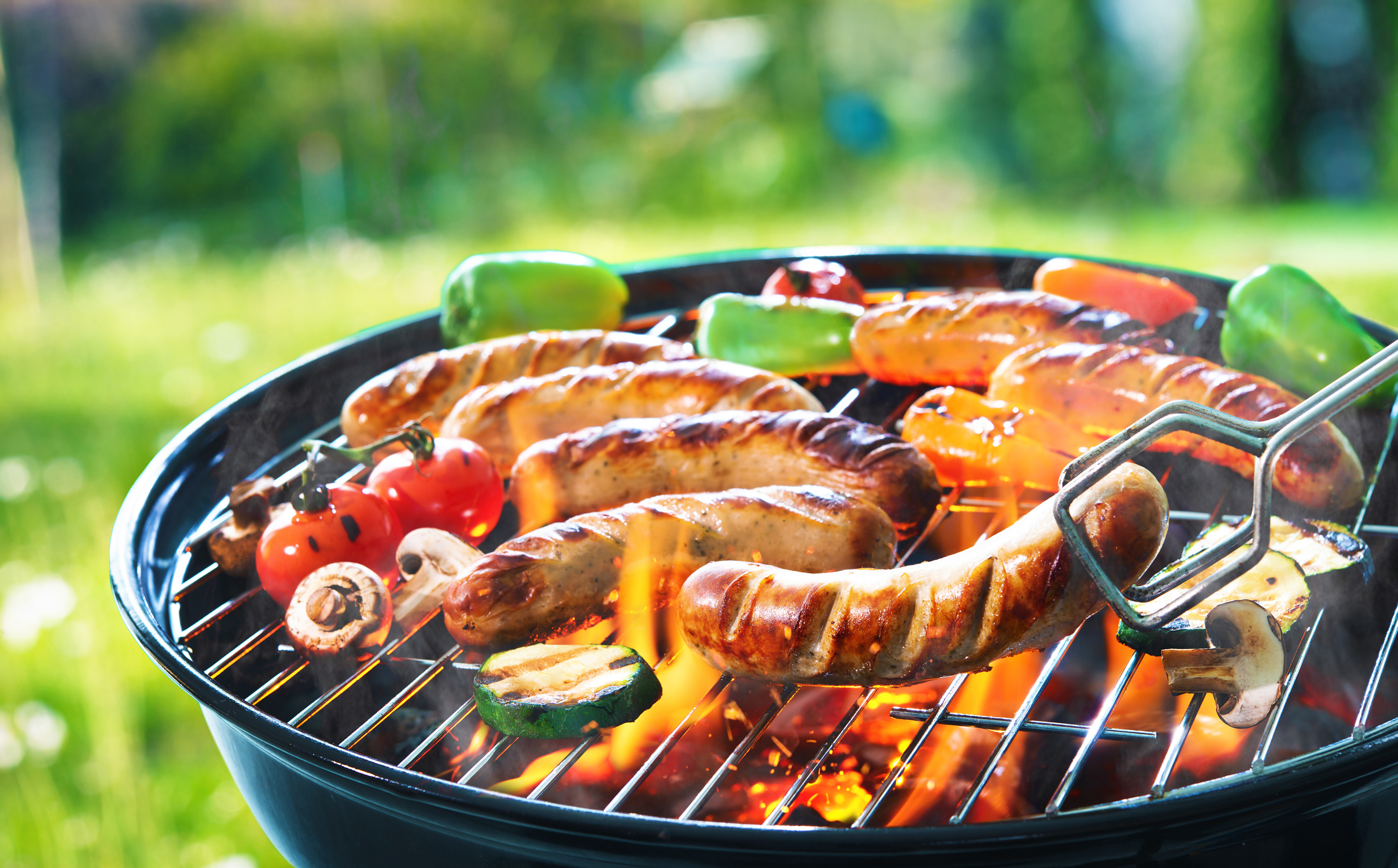
Pros of Gas Grills"
- Better for the environment: Cooking with gas is better for your health because food prepared on a gas-powered appliance contains fewer carcinogens compared to food that has been charred on a charcoal cooking surface. Gas grills also have a much smaller carbon footprint, about 1/3 of a charcoal grills’ carbon footprint.
- Fast start-up and effortless temperature control: With a gas grill, you simply flick the ignition, turn the dial, and you’re ready to cook. It takes a quick preheat to become grill-ready instead of waiting for coals to heat up. And depending on what you’re grilling, it’s easy to go from low-heat to high-heat to match the needs of your cuisine.
- Versatile operation: Gas grills provide the ultimate cooking versatility. You can prepare delicate fruits and veggies without any smoke overpowering your food, or you can enjoy dense cuts of meat that are cooked to perfection.
Cons of Gas Grills
- Longer Assembly: A charcoal grill can be put together and set up in a jiff, whereas mid-range or full-size gas grills can be difficult to assemble and install the propane tank.
- Safety precautions: While there are safety measures to take while operating any cooking appliance, cooking with gas presents dangers that might not always be visible. The flame is safer to control than lighting coals, but you must be extremely cautious that the propane tank is properly installed and does not leak. A grill should be placed at least 10 feet away from your home or backyard deck, and the grates need to be scrubbed regularly to prevent flareups and grease-related fires.
- Mobility: Gas grills are large and heavy, thus not easily portable. If you need a grill for camping or tailgates before Seahawks games, a gas grill might not be the best option. There are more travel-sized gas grills, but it would be much too dangerous to transport a full-size gas grill.
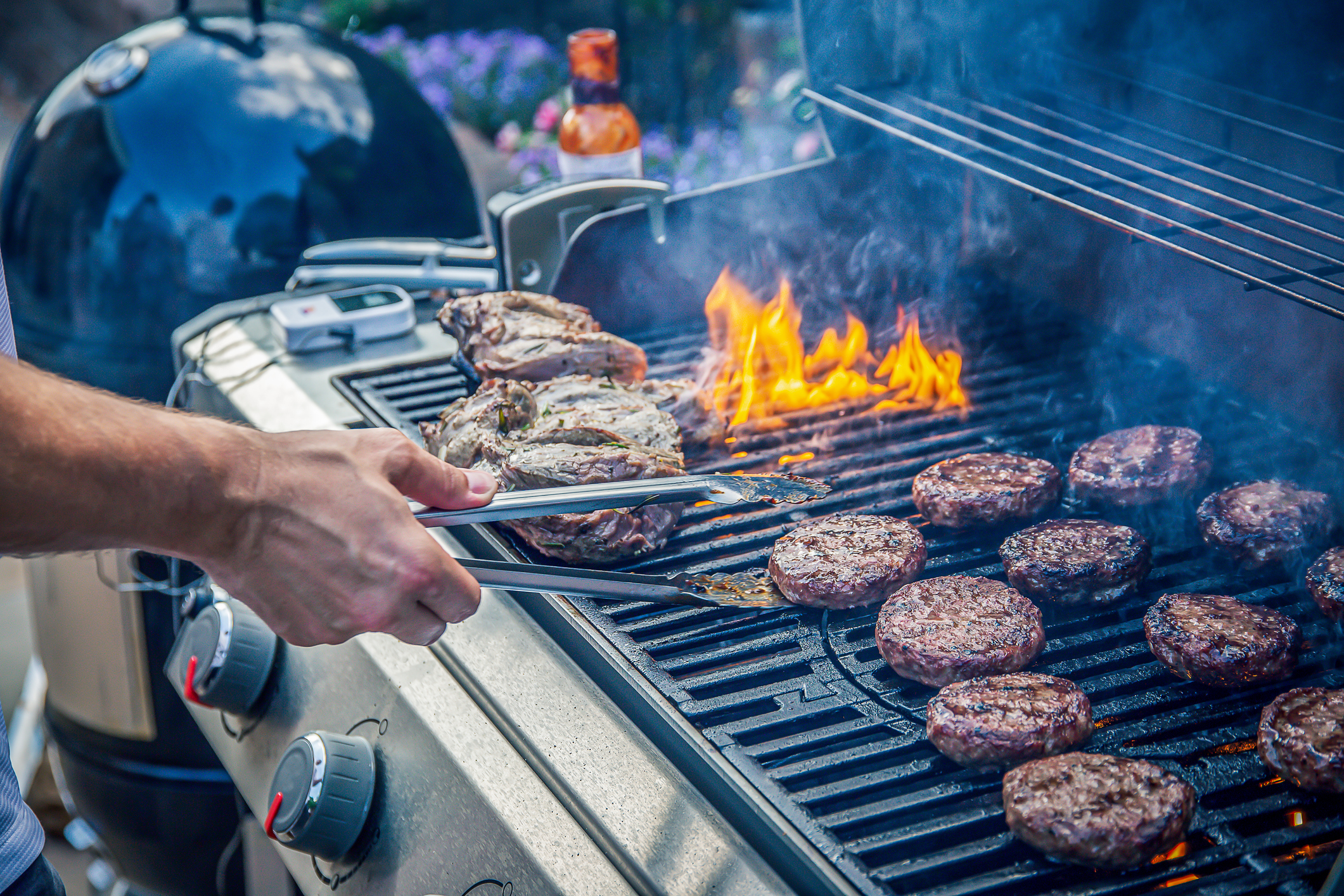
Gas vs Charcoal: Where They Differ
Before we jump into our favorite grill models, let’s further discuss the areas where these grill types differ:
Taste: As mentioned previously, charcoal gives off a richer, smokier taste. Drippings reach the flame and turn into a flavorful vapor that penetrates the food. Gas grills have metal grates that cover the flame, so food drippings hit this surface instead of your food. The advantage gas has in terms of flavor is that gas grills produce much more steam than charcoal products, allowing meat to retain its natural juices and stay moist.
Control: You can easily control the temperature of a gas grill. Once you’re comfortable with your grill, you can monitor the flame and turn the dial if a lower or higher temperature is required. You can walk away and let the grill do its thing, where a charcoal grill requires you to constantly monitor the temperature and mix the coals around.
Accessories: A gas grill will typically come with a few built-in accessories to enhance the cooking process. You may find a grill with side burners, storage drawers, back-lit dials, and maybe even a bottle opener. These distinctive add-ons make a gas grill a much more versatile product.
Safety: We discussed the importance of safely installing the propane tank for a gas grill, but cooking with charcoal has a different set of risks. Hot ash can burn your hands, and hot coals can ignite without your knowledge if they catch a steady gust of wind.
Cost: You’ll come to find a wide range of price points when it comes to grills, but the internal mechanisms of a gas grill make it a more expensive choice than charcoal. This is also because of a greater number of features and installation options. For example, a grill that’s built into your outdoor kitchen counter is going to carry a heftier price tag.
For a detailed and comprehensive breakdown, refer to our product comparison chart below:
| Product Attributes | Charcoal Grills | Gas Grills | |
|---|---|---|---|
| Assembly Time | 30 minutes | 1+ hour | |
| Heat-up Time | 30 minutes | 10 minutes | |
| Flavor | Smoky flavor | Natural flavor | |
| Health | Lighter fluid can pose health risks | Clean burning fuel | |
| Cleanup | Ash disposal | Scrubbing grill grates | |
| Maintenance | Replenish coals | Check gas lines and propane tank | |
| Price | More affordable | More high-end | |
| Smoke | Designed to trap smoke | Difficult to trap smoke | |
| Temperature Control | Requires constant attention | Easy to maintain | |
| Cool-down Time | 30-minutes | 5 to 10 minutes | |
| Ease of Use | Experience required | Require little instruction | |
Our Top Grill Picks
Now that you know all about the pros and cons of gas and charcoal grills, let’s highlight our top pick for each grill variety.
Best Overall Charcoal Grill
Your houseguests have arrived and they brought their appetites—that means it’s time to light the briquettes, pour a refreshing beverage, and wait for the soothing sound of sizzle and steam. Cooking on a charcoal grill is a culinary ritual of sorts that takes a certain level of dedication and commitment. Luckily, with the Weber Master-Touch Series Charcoal Grill (14516001), you can stay true to the art form of grilling and elevate your barbecue experience.
Weber has made its presence known in the gas grilling space, but their reputation comes from the impressive grilling units featured in the charcoal category. One of our most popular charcoal models, this grill is boasting with specialized, innovative features including:
- Gourmet BBQ system with plated steel cooking grate
- Heavy-gauge steel charcoal grate
- Porcelain-enameled bowl and lid
- Built-in lid thermometer
- Bottom wire rack
- Lid handle with heat shield
- Tuck-away lid holder
- Removable, high-capacity, aluminum ash catcher
- One-touch cleaning system
- Spring clip/push pin leg assembly
Best Overall Gas Grill
Weber isn’t the only brand impacting the barbecue space. Leading the pack in gas-powered grills, Coyote S-Series grills are hand-finished, made of 304-grade stainless steel. The unique cooking system features high-performing Infinity Burners, heat control grids for consistent temperature control and distribution, a custom-made firebox used to optimize the temperature range and heat flow, and independent spark ignition. Beyond that, Coyote S-Series grills feature sleek and shiny grill lights and backlit control knobs so you can work the grill day or night.
When it comes to grilling, you should never settle. The Coyote Outdoor Living S-Series Freestanding Grill (C2SL30LP-FS) provides high-level grilling with outstanding results. The full list of features include:
- Two high-performance Coyote Infinity Burners
- One infrared rear burner
- One Coyote RapidSear infrared burner
- 700 square inches of cooking area
- Up to 70,000 BTU of output
- Ceramic Flavorizers
- Complete 304 stainless steel construction
- Interior grill lighting
- LED illuminated knobs
- Rotisserie kit and smoke
- Integrated wind guard
- Pre-assembled grill cart with fold-down shelves and self-closing doors
Best of Both Worlds
If you’re looking for a flexible product that provides the control of gas and the flavor of charcoal, DCS produces exquisite grilling products that exude excellence in any outdoor kitchen. Built to withstand the needs of any grill master, the DCS Series 7 Traditional Built-In Grill (BH1-48R-L) features a massive total power of up to 121,500 BTU. If you’re craving the rich, smoky taste and aroma, the built-in smoker allows you to infuse smoke into your favorite cuisine. If you’re grilling pizza or making homemade garlic bread, you can even access a convection cooking mode to quickly bake dough and melt cheese to bubbly perfection.
Additional features include:
- Grease management system
- Smart Beam grill light
- Built-in temperature gauge
- Rotisserie burner
- Removable drip pan
- Full surface searing with U-shaped burners
- Double-sided stainless-steel grates
- Direct burner ignition
Frequently Asked Questions
1. Is charcoal or gas better?
It’s a matter of preference. Charcoal grills are more portable and reach higher temperatures, but gas is a cheaper fuel and makes for cleaner-tasting food.
2. Is there a taste difference between charcoal and gas grills?
Yes, as discussed, charcoal gives off a smoky flavor, and gas grills retain the natural, juicy flavor of your cuisine.
3. Should I buy a charcoal or gas grill?
Again, it’s a matter of preference and how you hope to utilize your grill. Charcoal grills are best for grilling on the go and gas grills are best used in outdoor kitchens or backyard patios.
Time to Grill
Charcoal and gas grills have their positives and negatives, but they are both an integral part of any outdoor kitchen design. Choosing the right freestanding, built-in, or portable grill ultimately comes down to your cooking experience and your lifestyle. Fortunately, there are endless grilling recipes you can prepare this spring, so you can’t go wrong with either grill type.
If you’re ready to participate in grilling season, it’s time to grab your spatula and visit any one of our six Albert Lee locations throughout the Pacific Northwest, shop our digital catalog online, or give us a call at your store of choice.

